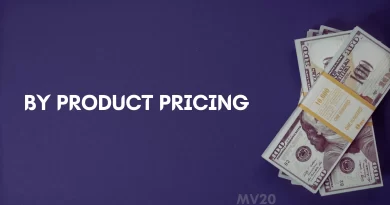Parity Pricing in Marketing [Explained With 5 Examples]
When it comes to pricing your products or services, it can be tricky to know where to start especially when you just started your first business.
Should you go low to attract more customers? Should you charge more for a premium product? Or should you aim for parity pricing, where you match the prices of your competitors?
In this article, I and you will take a look at parity pricing and how it can benefit your business. We’ll cover the basics of what it is, how to implement it, and some examples of companies that have successfully used it in their pricing strategies.
What is Parity Pricing?
Parity pricing, also known as “price matching,” is a pricing strategy where a company sets its prices to match those of its competitors. The idea behind this strategy is to create a level playing field for all businesses in the market, so that customers can easily compare prices and make informed purchasing decisions.
One of the main advantages of parity pricing is that it helps businesses avoid price wars, where companies are constantly trying to outdo each other by lowering prices.
This can be a dangerous game, as it can lead to lower profit margins and even financial losses. By setting prices at the same level as your competitors, you can avoid this scenario and focus on other ways to stand out, such as offering better customer service or a wider range of products.
How to Implement Parity Pricing
Implementing a parity pricing strategy will require a bit of research and some calculations. Here are the steps you can take to get started:
Research your competitors
The first step in implementing parity pricing is to find out what your competitors are charging for similar products or services. You can do this by visiting their websites, checking out their prices in-store, or even asking customers directly.
Determine your costs
Once you have an idea of what your competitors are charging, you’ll need to figure out your own costs. This includes things like production costs, labor costs, and overhead expenses.
Calculate your profit margins
Once you know your costs, you can calculate how much profit you need to make in order to stay in business. This will give you a benchmark for how much you need to charge in order to be profitable.
Set your prices
With all this information in hand, you can now set your prices to match those of your competitors. Make sure to keep an eye on your profit margins and adjust your prices as necessary.
Monitor and adjust
Once your prices are set, you’ll need to keep an eye on them and make adjustments as necessary. This could be due to changes in your costs or shifts in the market.
Examples of Parity Pricing
Hope now you had a good understanding of what parity pricing is and how to implement it, lets conside fe examples to better your understanding.
Walmart
Walmart is one of the most well-known examples of a company that uses parity pricing. They are famous for matching the prices of their competitors, including online retailers like Amazon. This helps them stay competitive and attract more customers to their stores.
Costco
Costco is another retail giant that uses parity pricing. They are known for offering a wide range of products at competitive prices, which helps them attract a large customer base.
McDonald’s
McDonald’s is one of the most successful fast food chains in the world. They have implemented parity pricing in their menu, by keeping prices similar to their competitors like Burger King and Wendy’s. This allows them to maintain their market share and attract customers who are looking for affordable fast food options.
Amazon
Amazon, the e-commerce giant, uses parity pricing in some of their product lines. They monitor prices of similar products on their platform, and match them to ensure fair competition for all sellers. This helps them attract more sellers to their platform and increase customer loyalty by providing competitive prices.
Southwest Airlines
Southwest Airlines is known for their low-cost, no-frills approach to air travel. They have implemented parity pricing by matching the prices of their competitors, which helps them attract budget-conscious travelers who are looking for affordable flight options.
Final Thoughts!
If other pricing strategies aint working for you then why not just give a try for parity pricing and see if that works out?
But beware to keep an eye on your costs and profit margins, and make adjustments as necessary. Hope you had a cler knowledge on parity pricing along with some good examples that we mentioned in this article.
Also read:
Competitor Based Pricing Strategy




